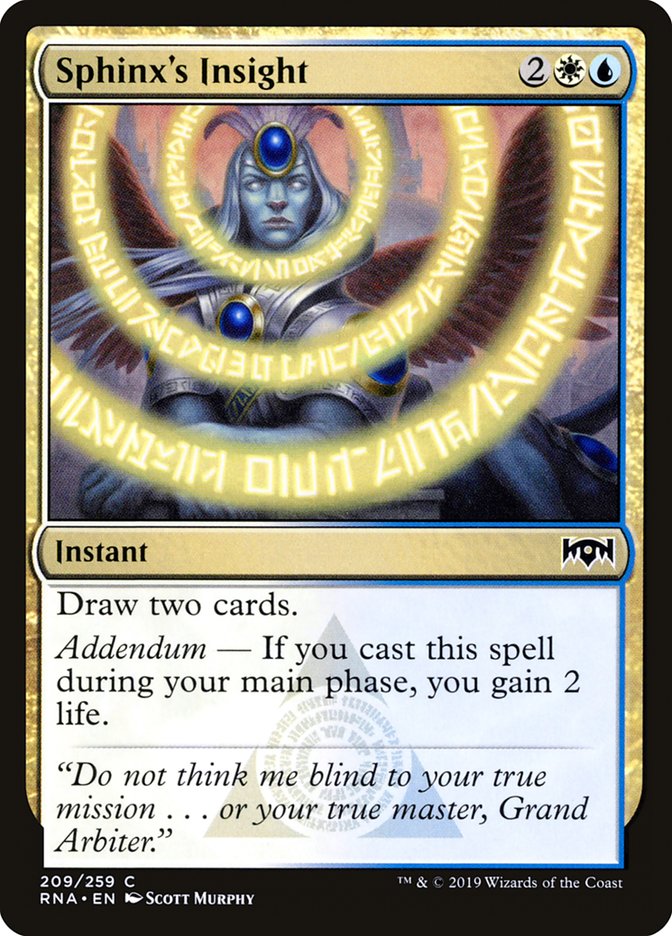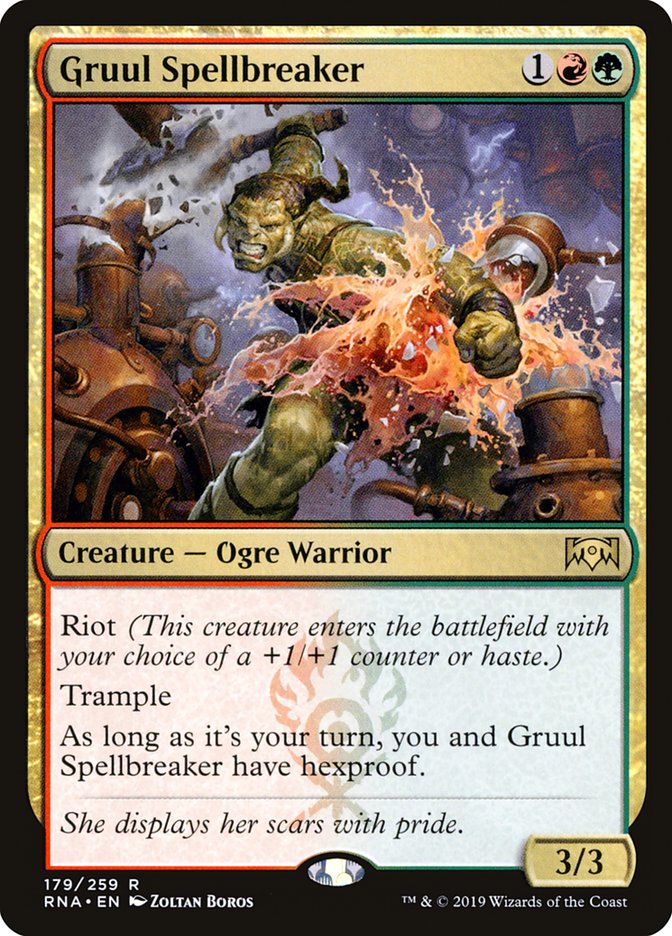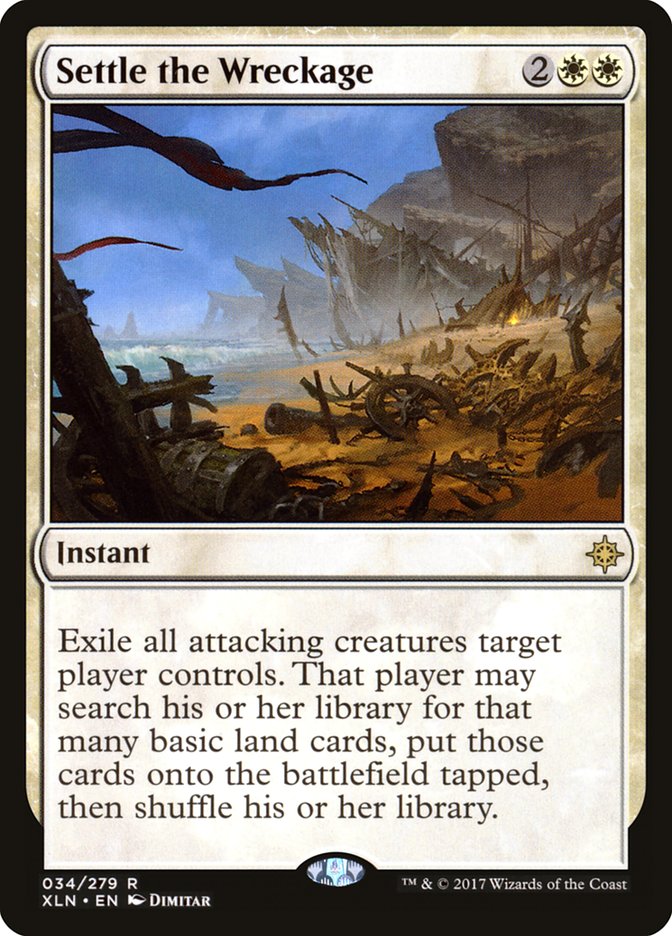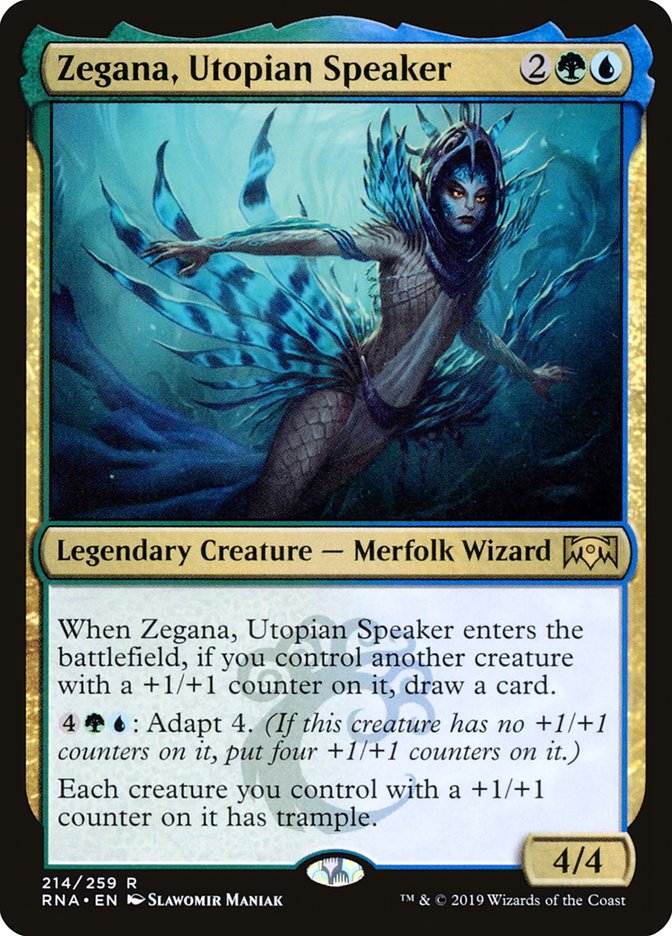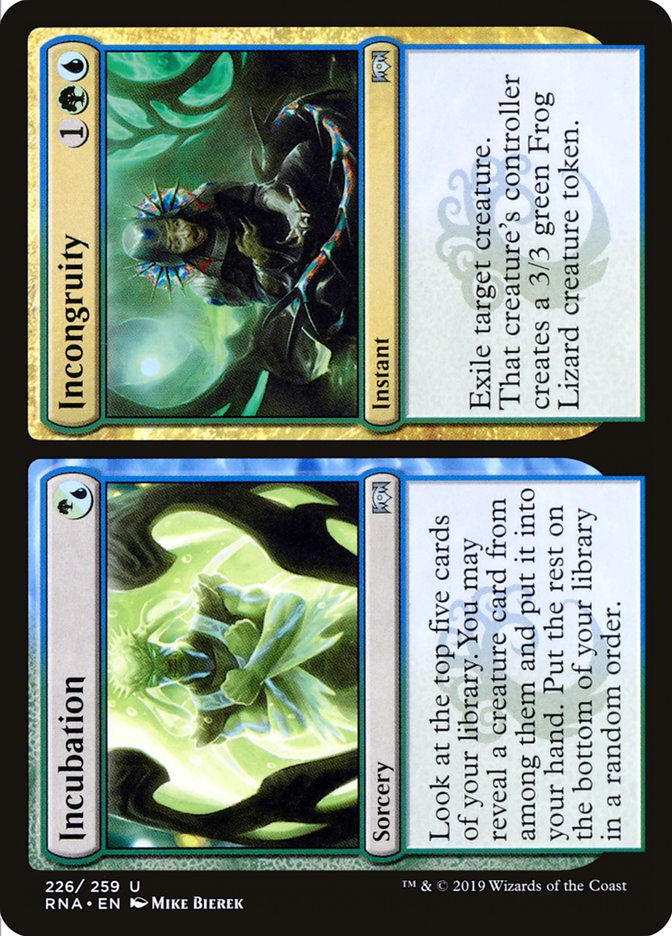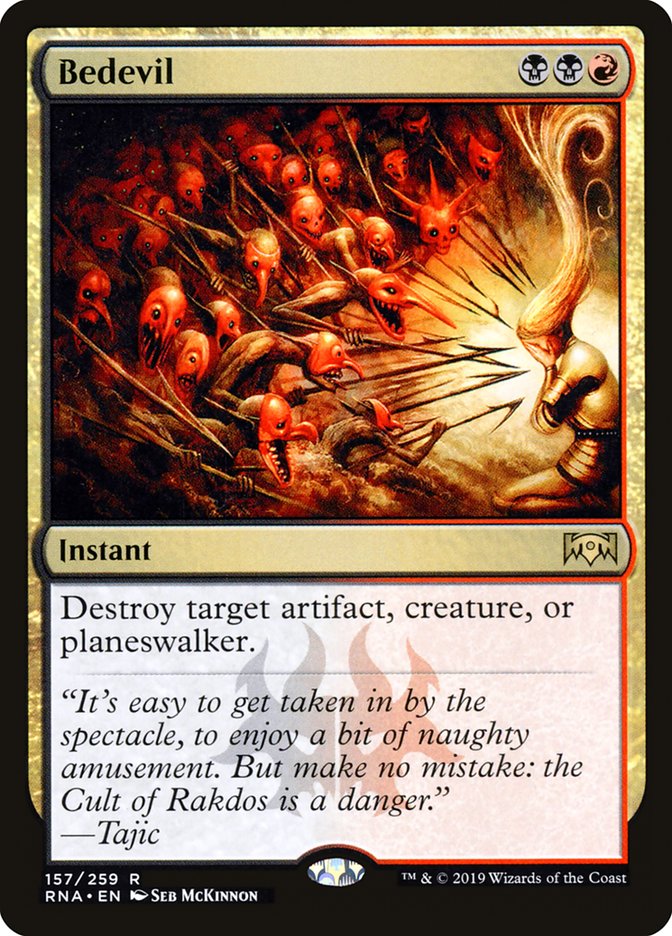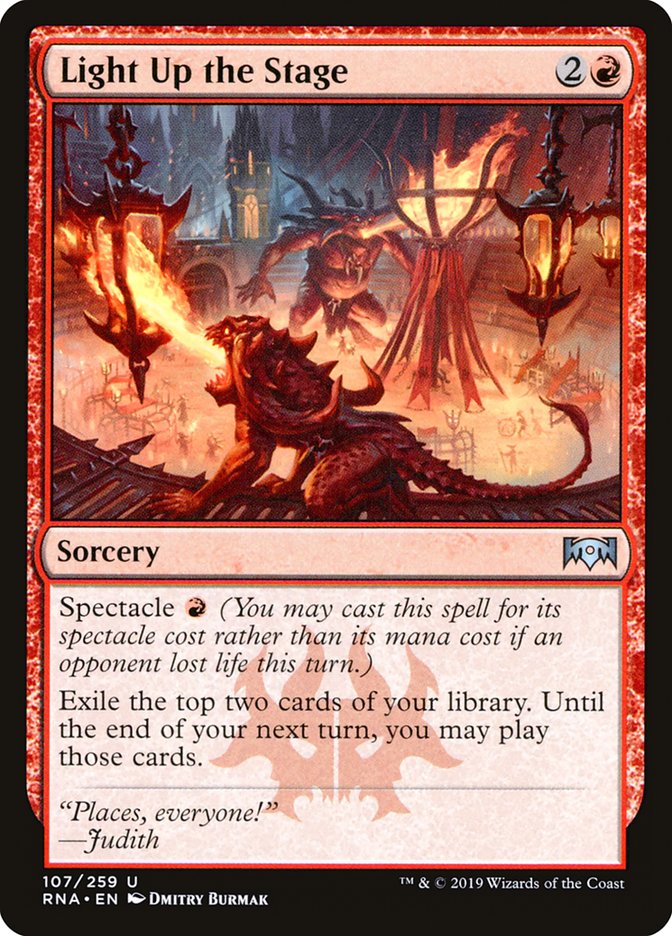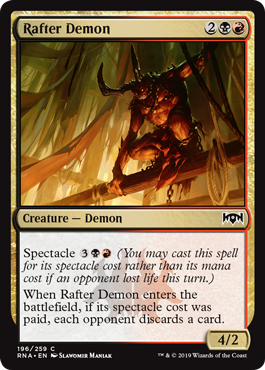Welcome to another edition of
Fact or Fiction
! Today, Ben Friedman, Ari Lax, and Sam Black are here to render their
verdicts on five statements about
Ravnica Allegiance preview season. Don’t forget to vote for the winner at the end!
1. With the addition of Absorb and the addendum mechanic, Teferi,
Hero of Dominaria is about to be dominate Standard once again.
Ben Friedman: Fact
. Teferi, Hero of Dominaria never really left. Jeskai Control was already
one of the best decks in Standard, and I expect the increased flexibility
of Azorius mana to only increase Teferi’s metagame share. Really, it’s
Hallowed Fountain that should bring Teferi back to the forefront of the
metagame, but Absorb and addendum are both useful boosts that should help
solidify the card at the top of the heap. Sure, Bedevil offers the
forthcoming Jund Midrange decks an opportunity to destroy Teferi before the
Azorius player untaps with countermagic available, but once the midrange
deck is reacting to the control deck’s haymakers, the battle has already
decisively shifted in the control deck’s favor.
At this point, I expect Teferi to be one of the defining cards in Standard
for the rest of its legality.
Ari Lax: Sure, Fact.
Yeah, Teferi, Hero of Dominaria is going to be one of the best cards in Ravnica Allegiance Standard. Azorius cards are going to make it
better, especially instants. This is all super obvious.
There’s just an implication here that it wasn’t already among the most
important and powerful cards in the format. Like, when Lebron James went
from the Cleveland Cavaliers to the Los Angeles Lakers, did he suddenly
become the best player in the league? No, he was the G.O.A.T. the whole
time.
So, if you mean “again” as in “yet again Lebron makes the playoffs and is
clutch,” yeah sure. If you mean “again” as in “well Teferi, Hero of
Dominaria was just waiting for the right support” I’m wondering what
Standard format you have been watching for eight months.
Sam Black:
Fiction.
it’s certainly hard to get a full picture of the metagame at this point,
but I’m optimistic about the balance and answers to Teferi. Bedevil is a
great card that answers Teferi before they can untap two lands while
generally being extremely significant and maindeckable. More importantly,
just as we saw with Bloodbraid Elf and Jace, the Mind Sculptor, haste
creatures are a fantastic check on planeswalkers, so in addition to Bedevil
lowering the cost and versatility of the best answer to planeswalkers, riot
means that it should be extremely easy for Gruul to persistently attack and
kill planeswalkers out of creatureless decks specifically.
Gruul Spellbreaker is particularly great here due to the extent to which
Teferi decks rely on Settle the Wreckage and two-mana removal, which it
beats.
The format will also continue to facilitate going wide fast, and Tithe
Taker is a fantastic addition to Boros Aggro that makes Absorb and Settle
the Wreckage specifically much worse. Imagine trying to stay alive by
holding up Settle the Wreckage against an opponent who sequentially casts
two Tithe Takers.
It looks clear that Wizards of the Coast knew the power and risk of Teferi
and went to great lengths to make trying to play a traditional Teferi
control deck miserable.
2.With the introduction of Gruul Spellbreaker and Tithe Taker,
Settle the Wreckage has gone from Standard staple to barely
playable.
Ben Friedman: Fact
. Settle the Wreckage was already a card that lived and died on an
opponent’s susceptibility to walking into it. Now that most aggro decks
will be capable of protecting themselves from a blowout, there is less
incentive to play Settle. One of the potentially most devastating blowout
play patterns in coming Standard is for a control player to hold up Settle
the Wreckage, only for an aggro player to drop Tithe Taker or Gruul
Spellbreaker and immediately punish the control player for that choice.
Settle the Wreckage was at its most powerful when it forced aggro players
to make a choice about committing to a potentially game-losing attack or
giving the control deck more time to find the pieces to lock up the game.
With sequences involving these new proactive creatures, the aggro deck can
turn the tables on control, forcing the control player to choose between
holding up Settle and potentially getting blown out by a Spellbreaker, or
main-phasing removal and potentially dying to a more powerful follow-up
threat. I expect an increased selection of removal for control decks to
mean that Settle the Wreckage no longer has the risk-reward profile worth
playing over new alternatives.
Ari Lax: Fiction.
This is a fun one because it’s a double fiction.
Fiction one is that Settle the Wreckage was a Standard staple in Guilds of Ravnica Standard. I played a lot of Jeskai, and the card
was among the worst cards in your deck. You only played it for two reasons:
you often had to kill Carnage Tyrant, and sometimes Boros Aggro made you
want more sweepers. If it was just Carnage Tyrant that was an issue, you
honestly would rather have something else like Cleansing Nova, but Settle
the Wreckage was an acceptable concession to decks outside of Overgrown
Tomb and Steam Vents existing.
Fiction two is that Gruul Spellbreaker and Tithe Taker are going to drive
the card out of the format. First off, Settle the Wreckage is probably the
best card against Tithe Taker. If the card costs one more, you will pay one
more to effectively win the game. Preventing afterlife from triggering is
just more important. As for Gruul Spellbreaker, Settle the Wreckage isn’t
even the card you want against bulky creature decks. They were already good
at pressuring around the card and forcing you to exchange it for the
minimum number of creatures. I sideboarded Settle out against Mono-Red
Aggro, and like I said, I only liked it against Golgari due to Carnage
Tyrant. Maybe the duo of Gruul Spellbreaker with Carnage Tyrant tears
things up, but that’s a lot of specifics.
Settle the Wreckage will keep doing its job as a necessary evil in a bunch
of spots. It won’t be good, but sometimes you just gotta give them the
exile-all-your-attackers business.
Sam Black:
Fact.
I answered the previous question before reading this one, but given what
I said there, this seems reasonable. It’s noteworthy that both cards
actually indicate pressure for and against Settle the Wreckage, in that
riot makes control decks want instant answers and afterlife makes them want
removal that exiles, but both cards are so powerful and so specifically
hose Settle the Wreckage that I think it’s more likely that we’re seeing
threats that punish control enough to push it out rather than threats that
require a specific answer.
I don’t really think we’ll get to a point where control doesn’t exist in
Standard – it’s not even clear what that would mean – but I think there’s a
good chance that control decks move way more in the direction of having a
big tapping threat in the mid-game like Niv-Mizzet, Parun or Nicol Bolas,
the Ravager and generally get more proactive, even if it’s just with a card
like Disinformation Campaign.
I think Settle the Wreckage would be bad against those tap-out control
decks (and even worse in your control deck the more often you’re tapping
out) as well as aggro decks that draw the cards that punish it, so if it
sees play, it’ll be in small numbers to round out other removal (for the
creatures that are good against it), rather than a 4x backbone of a removal
suite.
3. Zegana, Utopian Speaker and Incubation // Incongruity gave
Simic Merfolk the boost in power level it needed to become a viable option
in Standard.
Ben Friedman: Fiction.
These are both powerful cards, but they don’t stack up particularly well
against Golgari (soon to be Jund or Sultai or Abzan) Midrange, nor are they
great against control decks relying on Teferi, Hero of Dominaria. Simic
needs a Mutavault or Lumbering Falls to keep pushing damage if it’s going
to find success. These blue tempo-aggro decks with little evasion need more
than one of a few things to happen for it to become a viable option. We’re
looking for a card like Aether Vial to allow major tempo gains, a threat on
par with Thassa, God of the Sea to push through damage and give more
nut-draw potential, a sticky threat like True-Name Nemesis, army-in-a-can
cards like Master of Waves, and a way to catch up or answer opposing
threats. Simic doesn’t quite have enough of those pieces yet, and barring
some major new threat or protective spell, I’m reluctant to predict Simic
as a powerhouse in Standard anymore than it was during the previous two
Ravnica blocks. It’s just an aggro deck and likely worse than Boros Aggro
or Mono-Red Experimental Frenzy Aggro at that.
Ari Lax: Fiction.
Zegana, Utopian Speaker is a four-mana creature without evasion or a mass
pump ability. Merfolk’s important cards are all “Lord” style mass pump
creatures. When have you ever seen a deck like this play a four-drop like
Zegana? When have you seen an aggro deck like this want a four-drop that
wasn’t Collected Company-levels of insane?
Incubation is just Commune with Nature. That card isn’t good and we have
over a decade of people trying to play the card to prove this. It isn’t
Ancient Stirrings; that card finds mana and threats and cyclers and who
knows what else. It’s probably worse than Adventurous Impulse. Stapling an
expensive Rapid Hybridization onto the card doesn’t make me excited to play
it.
Also consider how Merfolk is losing. There isn’t some unbeatable creature
that it needs to spend three mana to Incongruity, though it probably can’t
beat Niv-Mizzet, Parun even if it does make the exchange. Merfolk is losing
when its Kumena, Tyrant of Orzaca dies and it can’t get through with random
donks. A 3/3 Frog Lizard is still blocking your Silvergill Adept just as
well as that Crackling Drake.
Merfolk needs tempo-positive interaction and good low-drops, not some
clunkfest Simic cards. Zegana, Utopia Speaker and Incubation // Incongruity
have potential, just not with Deeproot Elite.
Sam Black:
Fiction.
While I wrote
an article exploring the deck
, I think without another standout Merfolk it just looks to be a little
behind current Standard, and that’s ignoring how much better other Standard
decks get. Being able to take advantage of an entire guild (or two or
three) is much better than being able to take advantage of a single tribe
with a largely non-tribal set coming out.
Incubation might be a big deal, because some Merfolk are much better than
others, but spending even a single mana not deploying a threat seems like a
huge cost in a deck built entirely around snowballing the way Merfolk is.
Zegana is similarly marginal in the deck; it seems nice against removal
decks to have a large standalone creature that draws a card, but against
those decks it won’t always draw a card and it’s not really cheap or
cooperative enough to play particularly well with the core Merfolk
strategy.
4. Bedevil is the best card that has been previewed thus far in Ravnica Allegiance.
Ben Friedman: Fiction.
The mana on this card is a little shifty, but I expect it to be a solid
part of Standard for the foreseeable future. Hero’s Downfall was always a
solid role-player, and Bedevil is going to offer the same thing for Jund
Midrange. My only reservation is the demanding BBR mana cost, which
relegates the card to a small handful of decks. It’s going to be annoying
in the same way Hero’s Downfall was annoying, and I respect Wizards for
printing a flexible removal spell to fight the marquee threats of the
format.
Solid role-player and “best card” are not the same thing, though. The best
card previewed in Ravnica Allegiance is Lavinia, Azorius Renegade,
which stands to reshape Vintage and Legacy. If you’re viewing the set only
through the eyes of a Standard player, then sure, take Bedevil as your
ubiquitous removal spell of choice, but Lavinia is going to upend other
formats in a much bigger way than Bedevil will mold Standard. I like to
look at the impact a card will have on the whole game, not just one format,
and I’m much more excited to see the changes associated with Lavinia than
the consolidation associated with Bedevil.
Ari Lax: Fact.
I technically don’t see Hallowed Fountain on the
Wizards of the Coast Card Image Gallery
, so this gets a pass to the top slot for now.
The raw card type coverage on Bedevil is absurd in a format where there are
a range of threats to answer. The cost is great, with three-mana removal
being a key point where double spelling in the midgame becomes reasonable.
It is still just a three-mana kill spell, and the presence of Adanto
Vanguard and Carnage Tyrant means those aren’t the end of the road, but if
your deck can cast Bedevil it wants to play it.
The cast part isn’t that tricky, but it’s the one thing that could make or
break Bedevil. So many of the other default powerful cards in the format
don’t line up with double black, single red. You aren’t playing this with
Teferi, Hero of Dominaria. Goblin Chainwhirler is ambitious at best.
Jadelight Ranger and Bedevil is doable but a lot of mana requirements to
start off with, as is Niv-Mizzet, Parun or History of Benalia. Bedevil
isn’t necessarily miles better than the replacement removal spells that are
easier to cast, so the question facing it week one is if it is better than
these other threats.
Sam Black:
Fiction.
Bedevil is the most impactful card in Standard – it likely brings us back
to an Abrade era where artifacts are unreliable, but I think Tithe Taker is
ultimately the more powerful card.
The casting cost of Bedevil is extremely restrictive; you can’t splash it
if you’re not base black and it’s very hard to play it with colorless lands
or off-color basics in your deck. It’s only as good as Rakdos is. Moreover,
in Eternal formats, the bar for versatile three-mana removal spells is
extremely high.
Tithe Taker is like a splashable Voice of Resurgence – a card that demands
an answer from some decks while punishing them for answering it. The
comparison to Voice of Resurgence might not make it look great in Eternal
formats, but being single color and having great creature types is worth a
lot, and sometimes making it impossible to cast a spell is better than
pushing them for it (consider how much better this card is than Voice of
Resurgence against Settle the Wreckage).
5. Spectacle is the best of the five guild mechanics in Ravnica Allegiance.
Ben Friedman: Fiction
. Riot is better. Haste is an amazing mechanic, better than most give it
credit for. Spectacle is powerful, don’t get me wrong, but it’s only going
to be the best if WotCs’ development team has deliberately pushed a few
select cards to have too-cheap spectacle costs. If something is oddly
undercosted with spectacle, all bets are off. Barring a truly potent
enabler and some juicy payoffs, however, spectacle is destined to be a new
version of prowl (from Morningtide), not something I’m
over-the-moon about. Plus, the opponent will often know exactly what’s
coming when it comes to spectacle and can (depending on what the commonly
played spectacle cards are) plan for it to minimize the impact.
Riot, on the other hand, is going to offer tempo gains when slightly ahead
on the battlefield, or massive oversized creatures to stop opposing offense
when slightly behind. Aggro decks will benefit to no end from this ability.
From what I’ve seen so far, more in Limited but also in Constructed, I’m
more scared of riot than spectacle.
Ari Lax: Fiction.
Spectacle is closer to the worst of the guild mechanics in Ravnica Allegiance than the best. There’s a huge issue where if
your deck starts losing, as all your spectacle cards look really bad. Or
even if your hand just gets tripped up a bit by a Shivan Fire or Lava Coil.
The band of cards, decks, and games spectacle is good for is narrower than
you think. I only have adapt below spectacle in my rankings, since all the
monstrosity cards that saw play were beefy monsters with upside of
monstrosity.
My top choice for Ravnica Allegiance mechanic is either Gruul’s
riot or Orzhov’s afterlife. Afterlife is the easy one, as just making any
creature a two-for-one upon death is proven great (even Hunted Witness sees
a reasonable amount of play). Riot… well riot is just haste with upside and
haste is pretty broken. There’s also some design elements that imply a lot
of riot cards are forced into good rates, namely cards being green and red
creatures and the ability being a choice.
As for addendum, well there’s a reason I’m adding it last. The mechanic
isn’t inherently strong or weak, or really that much stronger than the
normal card type instant. The cards just might be good depending on what
you add. If addendum ends up the most powerful mechanic in Ravnica Allegiance Standard, it will be on the backs of a few
overpowered cards that happen to use it.
Sam Black:
Fiction.
What? Is there some reason to believe it is? Like, I guess I get that
cost reduction is powerful, but only to the extent that the cards are
costed aggressively in the first place. I don’t believe we’ve seen any
especially impressive spectacle cards, so this would be entirely
speculative.
In reality, I think spectacle is much more likely to be a trap. You build
your deck expecting to be able to cast your spectacle cards for their
spectacle cost, but then something goes wrong and your deck just stops
functioning.
Riot and afterlife both seem very strong to me, but that might be a
function of seeing them on very pushed rares. Still, choosing between haste
and size is great, as both options are good and you’ll want to choose
different ones in different situations such that you’re generally getting a
good rate for what’s going on (while spectacle is more feast or famine-good
when things are going as planned, horrible otherwise). Afterlife is the
exact opposite of spectacle, the cards are built to hedge against removal,
so you get something either way. Sign me up for either of those. Spectacle
doesn’t really appeal to me as a player, competitor, or designer. I’d be
willing to discuss whether it’s the worst, but best was a really surprising
question.


